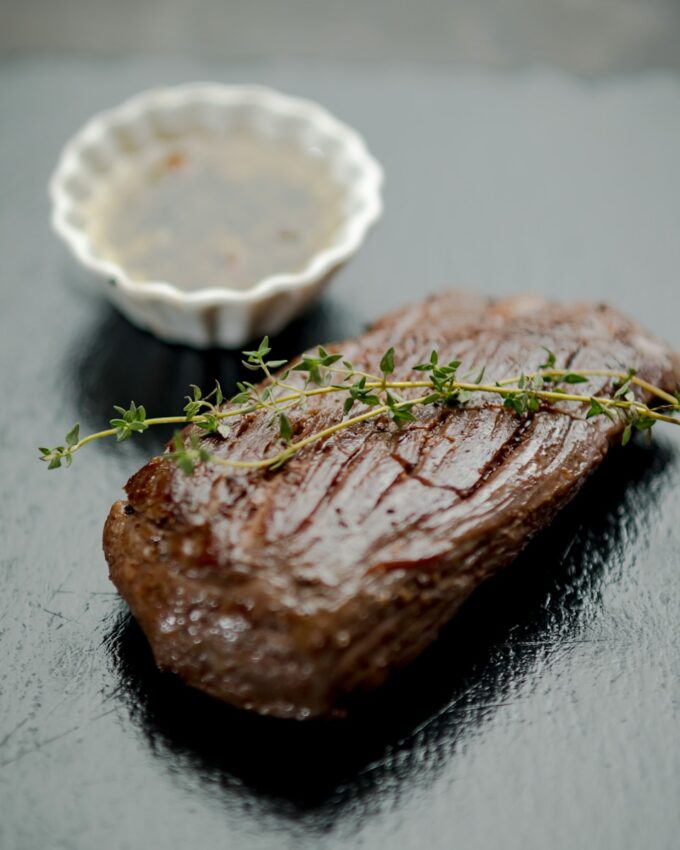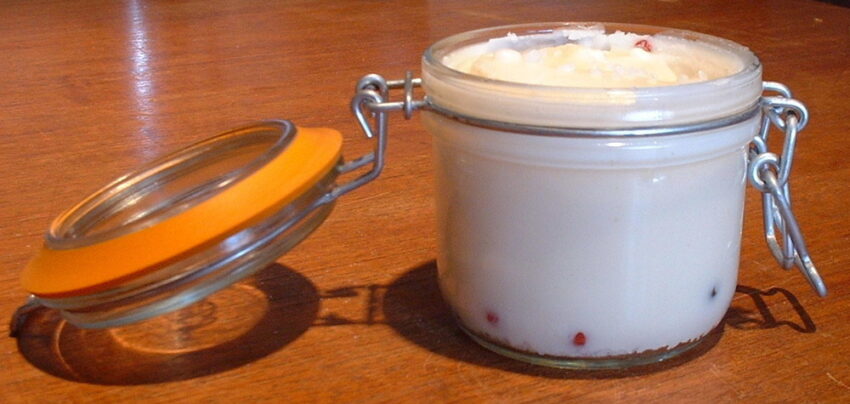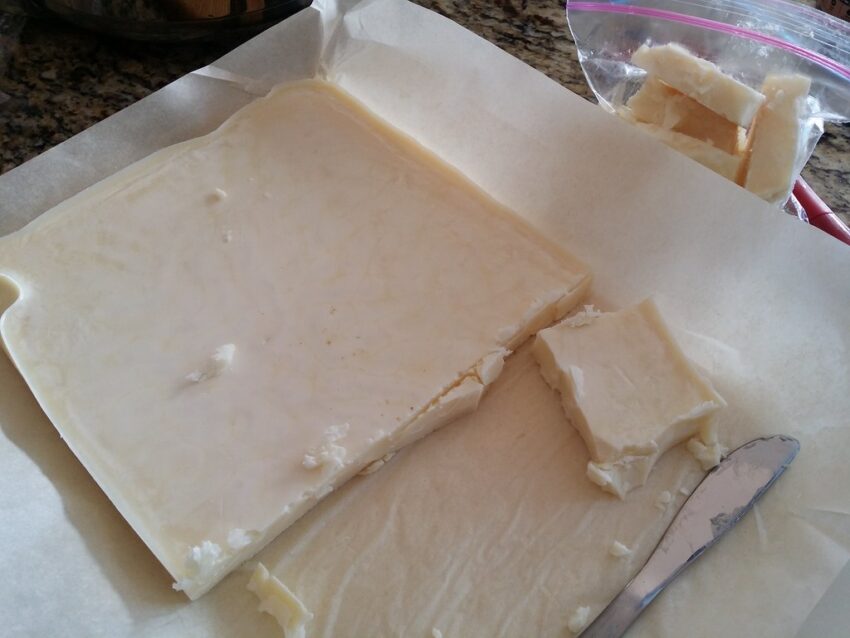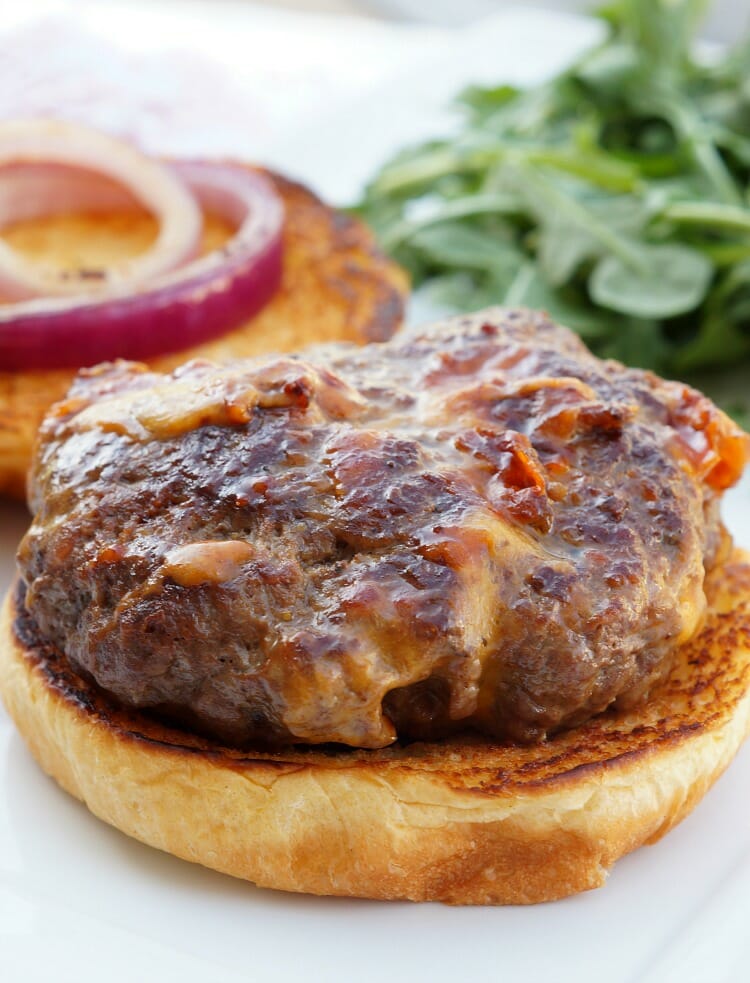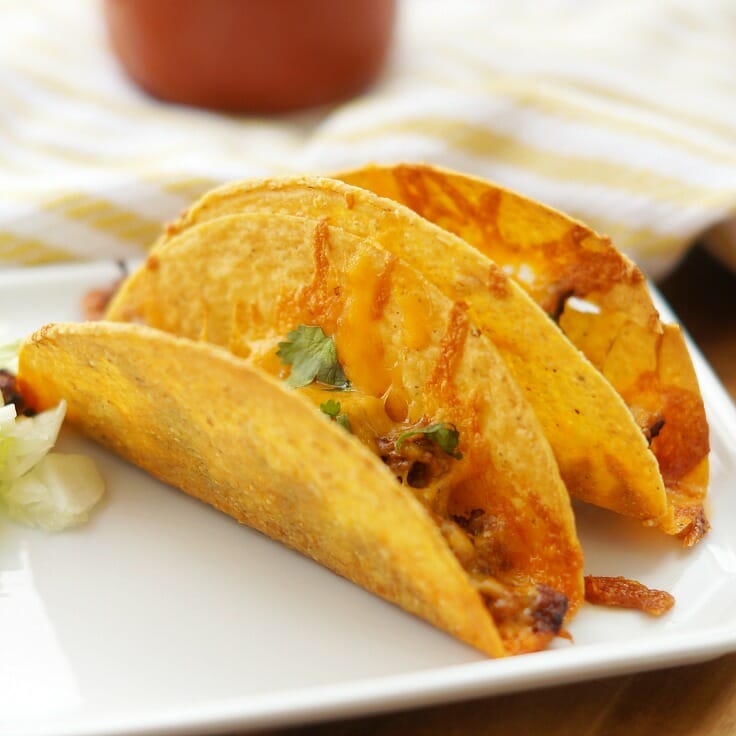In the annals of traditional kitchens, beef tallow reigns supreme as the primary cooking ingredient. Its myriad culinary uses and impressive shelf life elevated it to the status of a kitchen staple. Packed with vitamins and a balanced blend of monounsaturated and saturated fats, it was a nutritional powerhouse. However, its popularity declined with the advent of vegetable oils in the 20th century.
Today, as we increasingly seek nutritional value from whole-food components, we are witnessing a renaissance of this traditional fat. Research attests to the health benefits and unique flavor profile of beef tallow, making it an excellent choice for cooking. By rediscovering the virtues of beef fat, we can embrace sustainable cooking methods and elevate our culinary creations by knowing the health benefits of Beef Tallow.
What Is Beef Tallow?
So, what is beef tallow? It’s the rendered fat of cattle, often derived from the hard, saturated fat around the kidney. After rendering, we filter and allow it to harden, resulting in a thick, waxy product. The beauty of beef tallow lies in its versatility. I enjoy saving it in batches from the beef fat that comes from trimming briskets, but you can use it in a variety of ways in your cooking and skincare routines.
Before I started using it, I thought beef tallow contained a rich beef flavor. To my surprise, the flavor is mild, although with a delicious twist. Beef tallow derives some of its flavor from cooking, similar to how marbling breaks down in steak. Rendering it feels like applying a light version of the steak directly to our taste buds. The tallow’s taste changes depending on whether we get the fat from grain-fed or grass-fed beef.
What is Beef Tallow Used For?
Beef tallow is versatile and affordable compared to other household products. It is also a sustainable option since we are limiting the waste of a harvested animal. We widely use beef fat in the household, both in the kitchen and other areas. Its uses include the following:
1. Cooking
We often use beef tallow for frying and sautéing. Fat is an excellent choice for frying because it remains stable at high temperatures. It has a smoke point of 420 degrees and a soft texture like that of coconut oil or butter, ideal for roasting. We can use it to sear steaks or briskets, roast chicken, and fry French fries or potatoes. It adds rich flavor to the dishes, and we can use it in place of butter or cooking oil to cook potatoes, vegetables, and meat.
2. Baking
Tallow is great for flaky baked goods and recipes that require laminating dough or cutting in cold butter. We can use it to prepare biscuits, croissants, and pie crusts. It also works well for savory baked goods. I use beef tallow to prepare dark chocolate chip cookies, where the fat adds depth to the cookie and eliminates unpleasant waxiness.
3. Seasoning Cookware
Most of our kitchens have cast iron cookware. We can use beef tallow to season them and create a non-stick surface that is ready for cooking or baking. Moreover, the seasoning helps prevent the formation of rust.
4. Candle Making
Beef tallow offers an inexpensive way to make emergency candles when needed (Henchman, 2017). Many materials are good for making candles, but I prefer beef fat because it’s frugal and allows me to use my home-raised beef. Candles made from animal fat have been in use since ancient history, and following the traditional steps is quite an adventure.
5. Soap Making
Beef tallow is mild on the skin and is an ideal raw material for making soap (Maotsela et al., 2019). It can make hard soap that forms lather easily and won’t easily turn into goop when you shower. This makes it a cheap alternative for making long-lasting soap. Most tallow soap recipes need vegetable oils to add a bit of cleaning power. We can make modern bars by including coconut oil in our tallow bar recipes.
6. Deodorant
Beef tallow, when mixed with essential oils and baking soda, can be used as a natural deodorant. It contains vitamins A, D, B12, E, and K, as well as conjugated linoleic acid, which has natural anti-inflammatory properties. You only need a few basic ingredients, such as beeswax, baking soda, coconut oil, and arrowroot starch.
7. Cosmetics
Beef tallow is an essential component of skin care products, and we can use it on lip balm as a moisturizer. The tallow balm has nourishing properties that help protect and hydrate the skin barrier, making it suitable for dry skin. It also provides intense moisture, which is good for aging skin.
Why Do We Choose Beef Tallow?
You can derive fat from many animals, but beef tallow, in particular, is among the best options. It helps maintain culinary traditions and promote sustainability in the kitchen. Here are the advantages we derive from beef tallow:
Enhanced Cooking Flavor
Beef tallow adds a remarkable depth of taste to food, which no other kind of fat can achieve. Its flavorful profile complements savory and sweet dishes like roasted vegetables and flaky pastries. Moreover, it’s a healthy choice if you’re considering deep frying or any other meal that involves using a lot of oil.
High-Heat Recipe Application
The fat’s high smoke point makes it ideal for heat-intensive cooking techniques. This property prevents heat from decomposing it into dangerous free radicals.
Stable Shelf Life
Storage of the fat doesn’t require refrigeration. Placing it in an airtight container in a cool, dark area is sufficient for it to maintain its nutritious content and flavor. We must render it properly to remove impurities, and seal it properly to keep it usable for up to six months. If we use refrigeration, the fat can last up to a year, making it practical for large batches or warmer climatic conditions. To preserve it for longer, we can freeze it and extend its life up to two years.
Sustainability
Using beef tallow in the kitchen is a more sustainable approach to food. Using all the parts of a cow reduces waste and creates an ethical consumption model. In addition, we rely less on industrially processed oils, which are harmful to our health.
Higher Profile Compared to Other Fats
Beef tallow has distinct cooking qualities and flavor profiles that distinguish it from other animal fats like lard and duck fat. It is richer in saturated fats and has a more pronounced beefy flavor. In contrast, pork fat has a milder taste and softer texture, with a higher content of monounsaturated fats like oleic acid. Tallow is solid and robust and is a staple in Western cuisines.
It’s Beneficial to the Skin
Beef tallow is similar to sebum; it soaks deep into the skin after application. It contains CLA, which helps keep the skin moist. Additionally, it’s great for oily, dry, sensitive skin, and baby skin.
Is Beef Tallow Safe for Consumption?
Beef tallow is dense in nutritious vitamins and other requirements for bodily functions like immune response, vision, blood coagulation, and skin health. Its nutritional value comes from its fatty acid profile, which is comprised of linoleic, stearic, and palmitic acids. These fatty acids help support overall health and maintain cell membrane integrity. Tallow also contains choline, vital for brain health, further accentuating its nutritional profile.
Safety and moderation are key when incorporating beef tallow into our diets. Although the health effects of beef tallow are positive, especially when we source it from grass-fed cattle, it still contains a large amount of saturated fats. Consuming too much saturated fat can pose serious health concerns, especially for those at risk of heart disease or other medical conditions. We can use beef tallow as part of a balanced diet and ensure that we only obtain it from high-quality cattle. This protects us from the health risks associated with poor animal husbandry practices and contaminants.
Disadvantages of Using Beef Tallow
Tallow has a few negative characteristics that prevent it from being a perfect product. These include the following:
Beef Tallow is Thick
Tallow is a fat, so it’s essentially a thick ingredient like cocoa butter or shea butter. Applying too much to the skin could leave the area feeling greasy since it would take hours to absorb. For this reason, we only need to scoop a small amount and warm it in our hands before applying it to the skin.
Temperature Sensitive
Although beef tallow is a solid, it can melt when exposed to heat. After cooling, it develops a grainy, unpleasant texture. To avoid this, we must keep tallow-based products away from heat and direct sunlight.
May Cause Acne and Breakouts
Adopting beef tallow skincare routines may have some risks. When applied directly to super-sensitive skin, the thickness of beef tallow could cause breakouts and acne. There is also a theoretical possibility of contracting bovine spongiform encephalopathy (Mad Cow disease).
Sourcing Beef Tallow
We can elevate our cooking by finding quality beef tallow and using it in most of our dishes. We can purchase it from reputable sellers or make it ourselves. We can find beef tallow online or at the neighborhood butcher shops. With the return of its popularity, it has become common in many health food stores and specialty groceries. We can find reliable sources by comparing ratings and costs using online marketplaces.
What to Look for When Buying Beef Tallow
Identifying the following factors will ensure that we get high-quality products:
-
Source
We should only consider tallow derived from organically bred cows that are grass-fed. Proper care enhances the nutritional value of beef tallow by improving animal welfare standards.
-
Purity
It’s essential to ensure that the beef tallow doesn’t contain additives or preservatives. Pure tallow ranges from white to pale yellow, with a light, clean scent.
-
Packaging
Beef tallow needs to be kept out of light and air. Assess the packaging for an airtight seal to preserve its quality and improve its shelf life.
Where to Buy Beef Tallow
With the various advantages of beef tallow, it’s ideal to ensure that we get quality products. For convenience, numerous online retailers and marketplaces stock them in plenty and allow bulk purchases. Most of the packages are labeled with preservatives and additives, so we can assess whether the product is pure and natural. Purchase quality products from reputable dealers to begin your beef tallow skincare.
Henchman, A. A. (2017). Tallow Candles and Meaty Air in Bleak House. 19: Interdisciplinary Studies in the Long Nineteenth Century.
Maotsela, T., Danha, G., & Muzenda, E. (2019). Utilization of Waste Cooking Oil and Tallow for Production of Toilet “Bath” Soap. Procedia Manufacturing, 35, 541-545.

